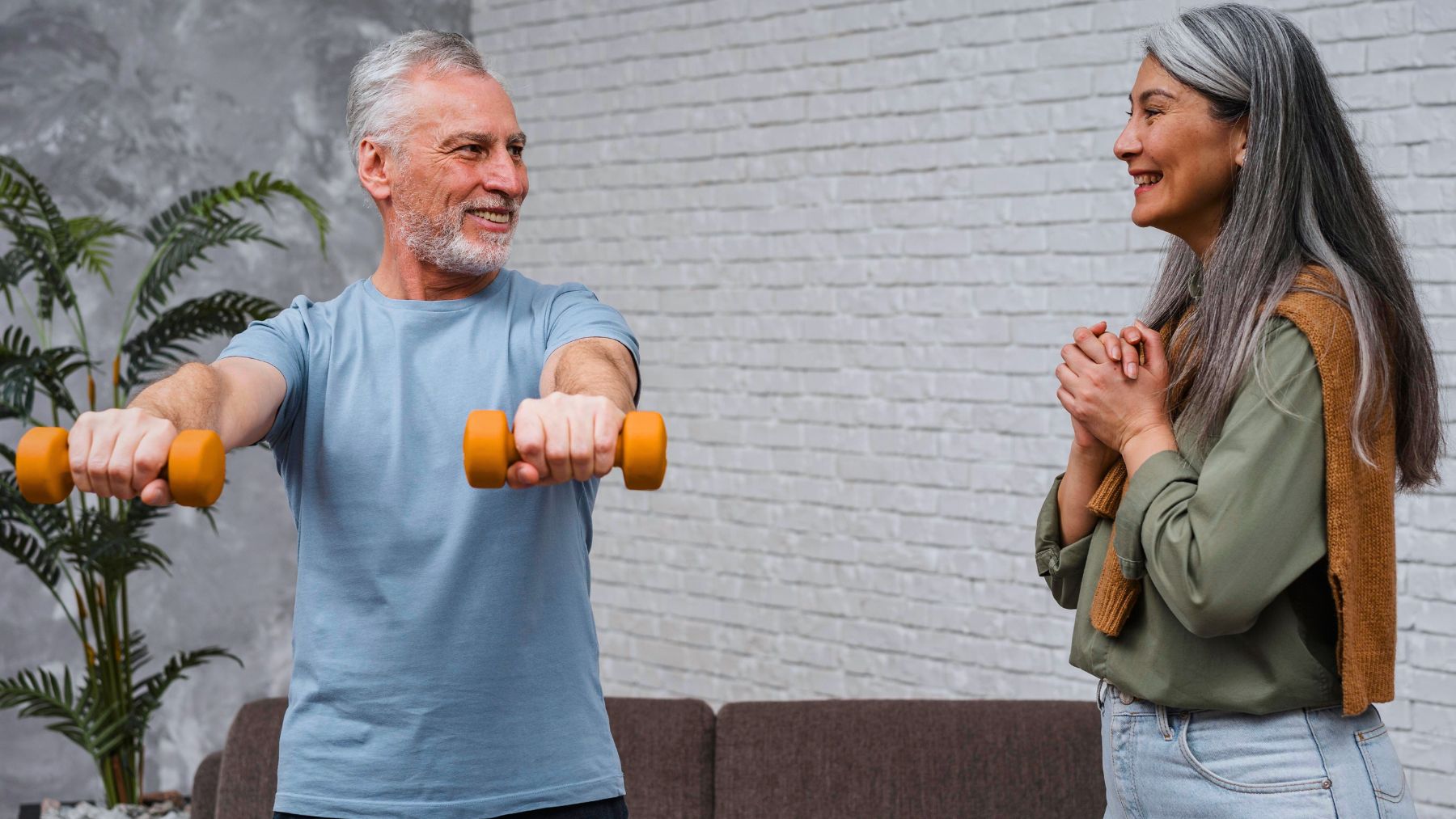There are many effective ways to build muscle, such as going to the gym and practicing Pilates or calisthenics, but if you’re looking for an easy and simple workout to do at home, keep reading. There’s a movement you’ve performed your entire life—refined to accommodate aging joints—that combats muscle loss, improves balance, and boosts bone density.
Here, we will explain why squats are an effective muscle-building exercise for seniors and introduce three supporting moves to amplify results. You’ll learn how to adapt squats for safety, combine them with low-impact upper-body and core exercises, and create a routine that integrates into your daily life.
Squats, the ultimate exercise for seniors to build muscle
Squats target the largest muscle groups in your body—quads, glutes, and core—which makes them exceptionally efficient for preserving strength as you age. They mimic everyday movements such as sitting down or climbing stairs, supporting independent living. Besides, it improves joint flexibility and bone density, and reduces the risk of falls by strengthening stabilizer muscles around the hips and knees.
Here’s how to do them safely:
- Stand in front of a sturdy chair, feet hip-width apart.
- Lower slowly until you lightly touch the seat (go only as far as comfortable).
- Press through your heels to rise back up, engaging your glutes.
- Keep your chest lifted and knees aligned over toes.
Start with 2 sets of 8–10 reps daily. Use the chair for support if needed, or try wall squats (with your back against a wall).
3 simple exercises to pair with squats
Combining squats with full-body movements maximizes muscle growth and overall stability. These exercises are designed to use your bodyweight or everyday household items such as water bottles:
- Wall push-ups: They build chest, shoulder, and arm strength without requiring floor work. Stand an arm’s length away from a wall. Place your hands shoulder-width apart along the wall, lean forward, and bend your elbows to lower your chest toward the wall. Push back to return to the starting position. Do 10–12 reps.
- Heel raises: Boosts calf strength, aiding balance and improving stair-climbing ability. Hold onto a countertop for support. Lift your heels to rise onto your toes, then lower slowly. For added intensity, pause briefly at the top. Do 15–20 reps.
- Glute bridges: They target the gluteus maximus—essential for everyday activities such as walking and climbing stairs—and help improve stability, posture, and strength. Lay on your back with your feet flat on the ground and shoulder-width apart; engage your core and raise your hips until your body forms a straight line from your shoulders to your knees, then lower slowly. Do 12–15 reps.
Begin with two 15–20 minute sessions each week, combining squats with one or two complementary exercises. Focus on performing every movement slowly and with proper form—feel free to draw inspiration from online instructors. As your strength improves, gradually increase the number of repetitions or incorporate light weights.
Pair your workout routine with protein-rich meals and scheduled rest days to allow your muscles to recover and grow. The goal is not to achieve a gym-perfect physique but to maintain the strength and vitality that enable you to live life on your own terms, year after year.

